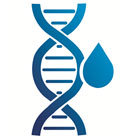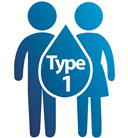
Type 1 diabetes is less common. Around 5-10% people with diabetes are diagnosed with type 1 diabetes. In majority of cases, people with type 1 diabetes are between the age group of 5 - 25 years. However, type 1 can affect at any age group. According to International Diabetes Federation Diabetes Atlas 7th edition, type 1 diabetes is still increasing by around 3% every year, particularly among children.The underlying mechanism involves an autoimmune destruction of the insulin-producing beta cells in the pancreas leading to absolute insulin deficiency in type 1 diabetes.
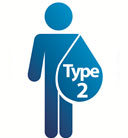
In high-income countries 87% to 91% of all people with diabetes are estimated to have type 2 diabetes, 7% to 12% are estimated to have type 1 diabetes, It is characterised by decreased insulin secretion and insulin action, either of which may be the main feature, usually both are present at the time when diabetes is clinically manifested. The main reasons for developing type 2 diabetes are having family history of type 2 diabetes, obesity, sedentary life style, stress, and wrong eating habits. (International Diabetes Federation (IDF) Diabetes Atlas. 7th Edition 2015.)
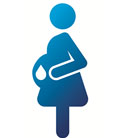
It is estimated by IDF that 20.9 million or 16.2% women had some form of hyperglaycemia while giving birth. An estimated 85.1% of those cases were due to gestational diabetes, 7.4% due to other types of diabetes first detected in pregnancy and 7.5% due to diabetes detected prior to pregnancy. The prevalence tends to be higher in populations with a high rate of type 2 diabetes. It is type of diabetes that happens for the first time when a woman is pregnant. (International Diabetes Federation (IDF) Diabetes Atlas. 7th Edition 2015.)
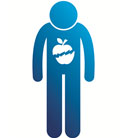
A rare type of diabetes associated with long term malnutrition. It is also known as Tropical Diabetes or Tropical Pancreatic Diabetes Mellitus. Two sub-classes have now been known: Fibrocalculous Pancreatic Diabetes (FCPD) and Protein Deficient Pancreatic Diabetes (PDPD). Symptoms include excessive thirst, excessive urination, excessive eating, weight loss, frequent infections.(JMGIMS, September 2008, Vol 13, No (ii), 19 – 24)
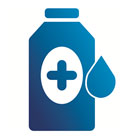
Many therapeutic agents can predispose or precipitate diabetes, especially when pre-existing risk factors are present. These may cause glucose control to deteriorate if administered to those with existing diabetes. They may act by increasing insulin resistance, by affecting the secretion of insulin, or both.(Drug Induced Diabetes; other types of diabetes mellitus. Diapedia; The Living Text Book of Diabetes. Aug 13, 2014.)
